When it comes to greening your wardrobe, a lot depends on what you do with…
The post Recycling Mystery: Can You Recycle Underwear? appeared first on Earth911.

When it comes to greening your wardrobe, a lot depends on what you do with…
The post Recycling Mystery: Can You Recycle Underwear? appeared first on Earth911.
It may seem like spring planting is a long way off, but if you’ve been…
The post Finding the Best Raised Bed Kit appeared first on Earth911.
A new study by researchers at University of Michigan (UMichigan) has concluded that almost half of food waste globally — roughly 620 million metric tons — could be saved by food supply chains being fully refrigerated.
Each year, approximately a third of worldwide food production goes to waste, a press release from UMichigan said. Meanwhile, according to the United Nations’ Food and Agriculture Organization, roughly 800 million people go hungry.
By fully refrigerating food supply chains — creating “cold chains” — greenhouse gas emissions related to food waste would be reduced by 41 percent globally, the study said.
“I was surprised to find the scale of our opportunity for reducing food loss and waste globally,” said Aaron Friedman-Heiman, the study’s lead author and a master’s student at UMichigan’s School for Environment and Sustainability, in the press release. “Approximately half of the roughly 1.3 billion tons of food that goes to waste annually can be solved through food supply-chain optimization.”
Parts of Asia could see a food loss reduction of 45 percent, as well as 54 percent lower associated emissions under optimized refrigeration conditions, the study said. And food loss in Sub-Saharan Africa could be reduced by 47 percent, while their emissions could drop by 66 percent in an optimized refrigeration scenario.
The researchers said the actual greenhouse gas emissions reductions would depend on cold-chain technology efficiency, as well as the carbon intensity of electrical grids, since emissions from refrigeration can be significant.
The researchers found that, in many situations, the development of less industrialized and more local “farm-to-table” supply chains could result in food savings comparable or even exceeding optimized cold chains.
The study compared the benefits of “farm-to-table” food systems with those of technologically advanced and globalized food-supply chains.
“Hyper-localized food systems resulted in lower food losses than optimized global, refrigerated supply chains,” said Friedman-Heiman in the press release. “The results help quantify the value of maintaining and supporting local food chains.”
The study, “The impact of refrigeration on food losses and associated greenhouse gas emissions throughout the supply chain,” was published in the journal Environmental Research Letters.
Roughly eight percent of greenhouse gas emissions produced by humans are from food losses, UMichigan said.
The study focused on losses that were part of the post-harvest to retail part of the supply chain, rather than on at-home or on-farm losses.
While the research accounted for food production emissions, it did not take into account emissions tied to supply-chain operations, refrigeration or landfilled food waste.
The researchers found that most food gets wasted at the household level in Europe, North America and other industrialized regions. This means improvements to cold chains would not significantly impact total food losses.
The study underscored the importance of food losses related to meat products, as their climate-related emissions were consistently more significant than those of any other type of food, mostly because of the intensity of greenhouse gases associated with meat production.
The pair of researchers from UMichigan found that meat makes up more than half of greenhouse gas emissions from food loss, despite its food losses by weight being less than 10 percent globally. They also discovered that optimizing meat’s refrigeration could lead to a reduction in emissions of 43 percent from meat loss.
The study modeled food losses at every stage in the supply chain, highlighting where cold chains could be optimized to lower emissions and food losses. They then looked at the effects of moving to an optimized system — one with refrigeration of high quality at every stage — from the currently inconsistent cold chains of variable quality all over the globe.
“Although cold chain infrastructure is rapidly increasing worldwide, an optimized cold chain will likely develop at different rates and in different ways across the globe,” said Shelie Miller, co-author of the study and a professor at the UMichigan School for Environment and Sustainability, in the press release. “This analysis demonstrates that while increased refrigeration should lead to improvements in both food loss and greenhouse gas emissions associated with food loss, there are important tradeoffs associated with cold chain improvements by food type and region.”
The post Improved Refrigeration Could Reduce Global Food Waste by 41%, Study Finds appeared first on EcoWatch.
According to allegations by a former research fellow for the U.S. Environmental Protection Agency (EPA) and watchdog group Public Employees for Environmental Responsibility (PEER), the EPA’s own documents indicate that false information may have been presented to the public regarding the agency’s testing of harmful contaminants in pesticides.
In May 2023, the EPA issued a press release stating that it had found no per- and polyfluoroalkyl substances (PFAS) “forever chemicals” in samples of particular insecticides, reported The Guardian. However, the press release contradicted a former study by an EPA researcher that had found PFAS in the cited pesticide products.
“It’s pretty outrageous,” said Kyla Bennett, director of scientific policy at PEER. “You don’t get to just ignore the stuff that doesn’t support your hypothesis. That is not science. That is corruption. I can only think that they were getting pressure from pesticide companies.”
The allegations by PEER, which is led by former employees of the EPA, were made on Tuesday.
Bennett said PEER obtained the contradictory pesticide testing data after a Freedom of Information Act (FOIA) request.
The opportunity to comment was declined by the EPA. The agency said “because these issues relate to a pending formal complaint process, EPA has no further information to provide.”
Recently, the EPA recognized that PFAS have the potential to contaminate pesticides and recently classified two PFAS as hazardous.
PFAS are used in various industries and consumer goods like nonstick cookware, food packaging, paints, electronics and cleaning products. Some of the chemicals have been linked to health problems such as immune system damage, cancer, birth defects and delayed development in children.
In a letter submitted to the EPA by PEER, the watchdog group demanded a correction to the public statement and retraction of the EPA’s research memorandum.
In its complaint, PEER said that by seeking to refute the study’s findings, the EPA was “guilty of numerous departures from both accepted scientific and ethical practices” and “provided misinformation to a national audience and intentionally damaged Dr. [Steven] Lasee.”
The study by Lasee from 2022 said the toxic PFAS perfluorooctane sulfonic acid (PFOS) had been detected in six of 10 insecticides used on cotton and other crops.
The EPA responded by saying it had gotten samples of the same pesticides, as well as purchased other products with the same registration numbers. The agency said its scientists had not found any detectable PFOS.
PEER and Lasee said the new findings raised immediate questions of testing validity due to a number of deviations from scientific norms and other flaws discovered in the EPA’s testing analyses.
“When you cherrypick data, you can make it say whatever you want it to say,” Lasee said, as The Guardian reported.
The post Watchdog Group Accuses EPA of Misconduct in Testing Pesticides for PFAS appeared first on EcoWatch.
Mexico City could be just weeks away from Day Zero, the day when the city runs out of water supplied by the Cutzamala water system. Water reservoirs in the city recently hit historic lows, and amid ongoing drought conditions and a heat dome, the city could face Day Zero by June 26.
The Cutzamala water system supplies about 25% of Mexico City’s water, while about 60% comes from underground aquifers that are over-exploited and have had issues dating back to the 16th century, CNN reported.
“When the Spaniards arrived on the continent, they drained the lakes on which the city was was built,” said Caroline Houck, senior editor at Vox, as reported by Marketplace. “And so all of the impervious surfaces that have been built on top of those don’t really allow for the rainwater that does fall to replenish the aquifers.”
As of March 2024, the Cutzamala water system reached a historic low of about 38% capacity, NPR reported.
Starting October 2023, Mexico City began tightening the amount of water supplied by the Cutzamala system and reducing the flow rate. The city has also called on citizens to drastically cut back on water usage.
However, while water conservation by the public has helped in similar crises, including one made famous in Cape Town, South Africa in 2018, Mexico City also faces major water losses from its infrastructure. As Fast Company reported, about 40% of the city’s water is lost through leaks, and additional water is lost to theft, as organized crime groups steal public water for agricultural use or to resell back to the public at inflated rates.
Without rain, Day Zero is expected to come by June 26, Mexico Business News reported.
“This problem has worsened in the last four years, there has been no rain, and for this reason the dams have very low levels,” Alejandra Margarita Méndez Girón, general coordinator of the National Meteorological Service, said in a press release. “We have had up to 93 percent of the region with severe to moderate drought.”
But even with rain, Mexico Business News reported that a 2022 study by the National Water Commission (CONAGUA) found only about 42.5% of the country’s groundwater was fit for human consumption. Further, experts fear that rainfall will bring false hopes, when the infrastructure still needs attention to prevent future shortages.
Officials noted that the El Niño climate event, heat waves and a decline in rainfall have all contributed to the current water shortages, although some politicians have argued there is no “Day Zero” ahead.
The rainy season is expected to begin in June. But many citizens have already reported water shortages, and some neighborhoods have experienced water scarcity for years, CNN reported.
“There is a clear unequal access to water in the city and this is related to people’s income,” Fabiola Sosa-Rodríguez, head of economic growth and environment at the Metropolitan Autonomous University in Mexico City, told CNN.
The post Mexico City Nears Day Zero, When It Could Run Out of Water appeared first on EcoWatch.

“When words become unclear, I shall focus with photographs. When images become inadequate, I shall be content with silence.”
Photographer and environmentalist Ansel Adams
As a writer, I obviously have a fondness for words. I believe in their power — while also recognizing their limitations. Much as we try to “show, not tell” through the written word, an article can’t quite approximate letting someone see or experience something for themselves. Photos and videos, on the other hand, come pretty darn close.
Visual storytellers have to be immersed in the scenes they capture, up close to the people, animals, plants, and landscapes they create images of. They document things that many people otherwise wouldn’t get to see with their own eyes. It’s a powerful medium, with a well-established history of stirring viewers to care about climate change and conservation. But high-quality, thought-provoking photography and film is also time-consuming and expensive to create, putting it out of reach for many would-be climate communicators and storytelling organizations.
It’s a problem that Kogia, a nonprofit media library, is attempting to solve. The library offers photos and video clips, free of charge, to scientists, conservation organizations, artists, activists, and others.
“Our mission has been to democratize access to this media in a way, and to elevate the voices of those who are on the front line of conservation and just give them the best tools possible for them to tell their stories,” said Nessim Stevenson, a filmmaker and photographer who founded the project along with his cousin, and fellow photographer, Karim Iliya. They saw a great need to make high-quality images more readily available to conservationists and mission-driven organizations as an essential communication tool.
“I had a lot of nonprofits that were asking me for photos and videos to use as I was photographing underwater worlds — whales and turtles and manta rays and coral reefs, from the big animals to the little tiny creatures,” Iliya said. He knew other environmental photographers must be getting the same types of requests, and wanted to create a platform that would enable these organizations to get the resources they needed to further their work, while easing some of the strain on individual creators fielding these requests. The pair published a beta form of the project in the spring of 2023, which Stevenson describes as a “clunky version that we made ourselves in Squarespace.” Still, they quickly garnered more than 100 members, from over 40 countries. This year, on Earth Day, they launched Kogia 2.0 — a more robust library that they built out with the help of a volunteer web developer, featuring the work of over a dozen creators.
The library also creates an opportunity to divert a certain type of waste. Only a tiny fraction of the images a photographer creates in the field will actually get licensed for prints or articles or other uses. The rest tend to sit on hard drives, essentially becoming “digital trash,” as Iliya put it. “It’s difficult to make money off of it, because it’s like the 10th best photo of a clam or a whale or a clownfish, and not the best one.” But these excess images are still good quality, and can be a gold mine for small organizations and individuals that don’t have the budget to license or commission original photos or film. “So we’re trying to reuse and recycle — basically put to use this stuff that would’ve just sat and rotted away,” Iliya said.
Kogia is ocean-focused right now, but Iliya and Stevenson ultimately plan to expand the library to include land ecosystems as well. They’re also starting a fellowship program that will involve sending out camera kits to young photographers and videographers all over the world who want to document conservation stories from a local perspective.
“The way we’ve been seeing some of the media used, from the anti-whaling movement in Iceland to student-led groups educating young kids about nature and their environment in South Asia, it’s been really surprising and exciting,” Iliya said.
Stevenson and Iliya shared a selection of their favorite images from the gallery, gathered below. These come from some of the most threatened ecosystems on Earth — like Palau, part of a coalition of small island states that have banded together to hold large nations accountable for climate impacts (and recently won a major victory from the International Tribunal for the Law of the Sea). Although some of the images in Kogia’s library offer a look at the impacts of climate change, industry, and pollution on ocean ecosystems, the majority, including these, focus instead on their beauty and how much there is to protect.
— Claire Elise Thompson
![]()
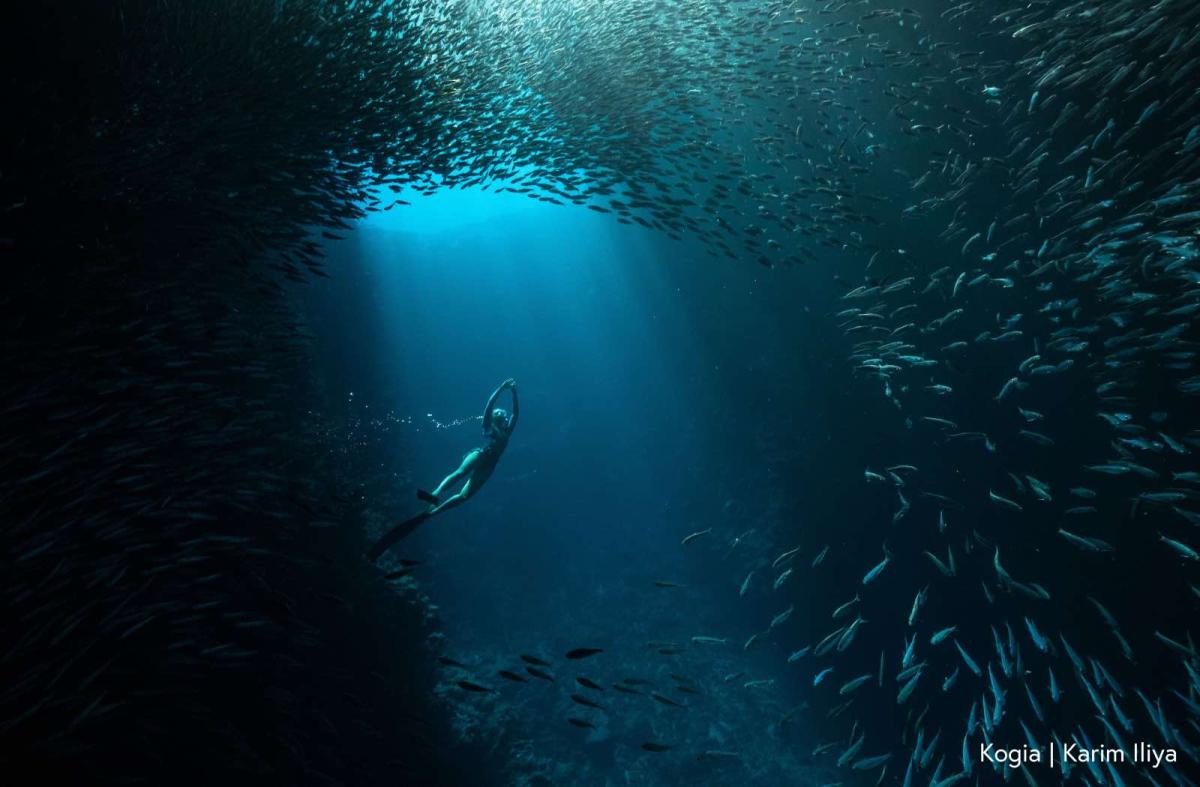
A freediver in a cave in Vava’u, Tonga.
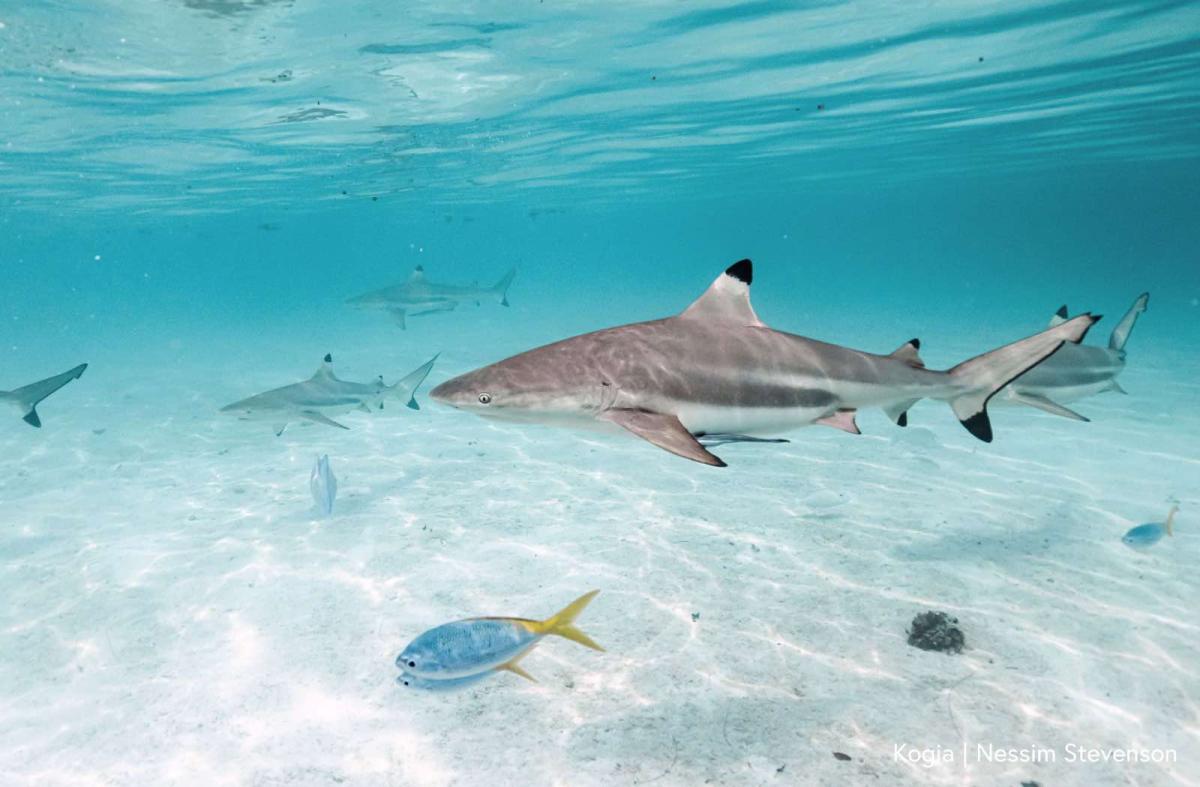
Blacktip reef sharks in Palau.
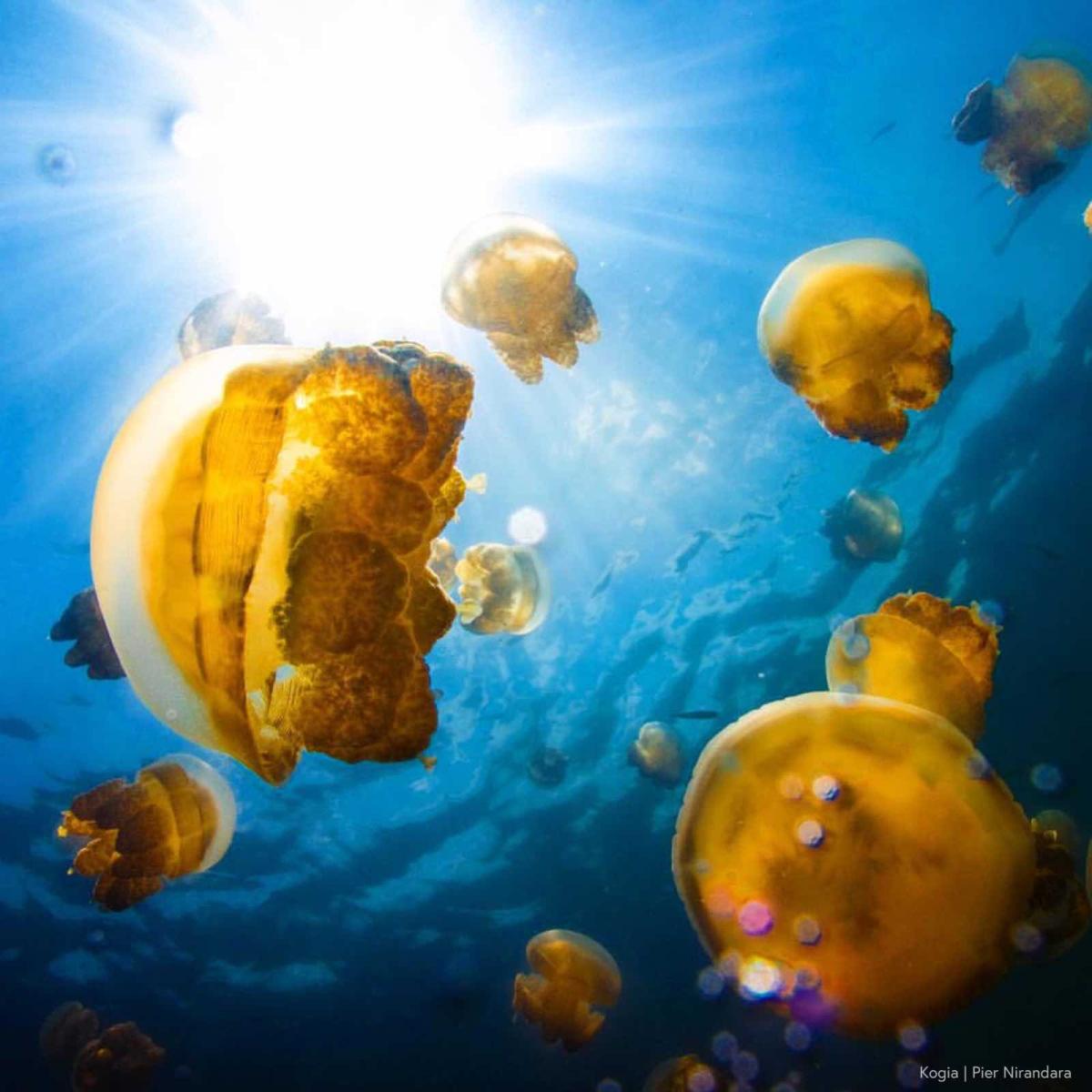
Golden jellyfish in Palau.

A green turtle swimming over seagrass in Puerto Rico.
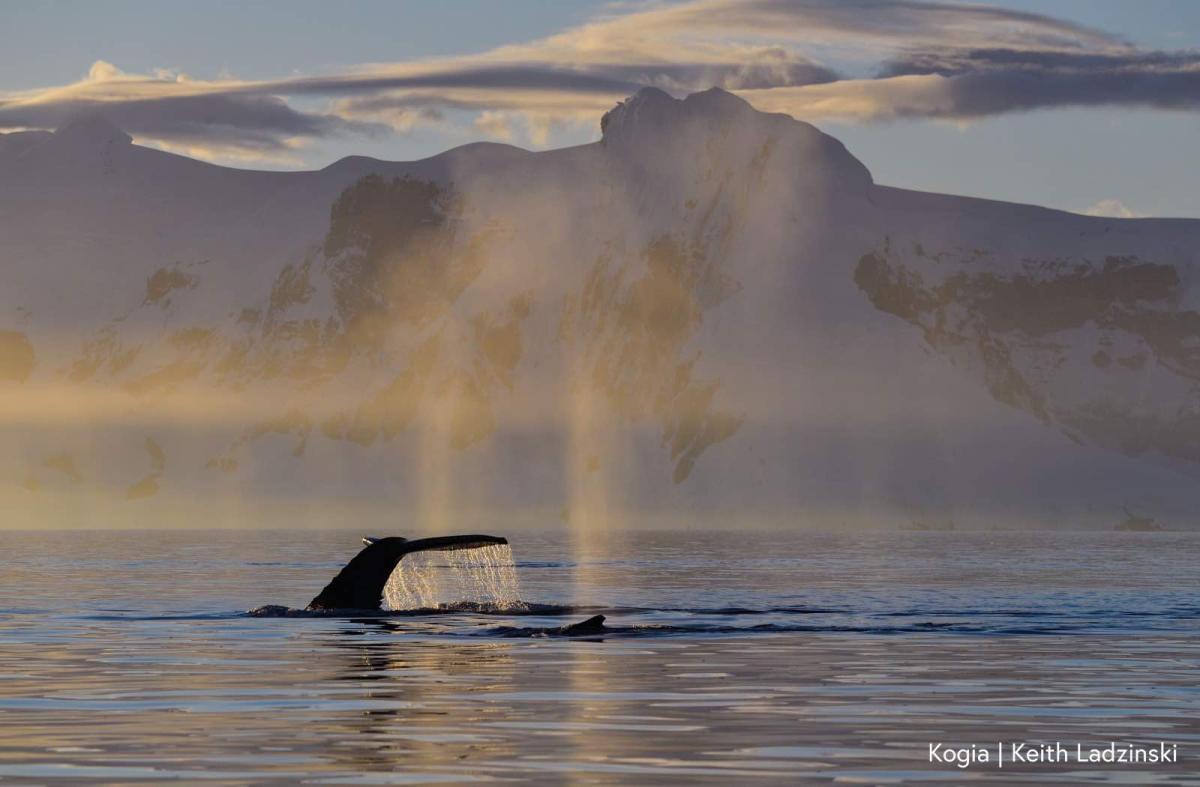
A humpback whale tail in Antarctica.
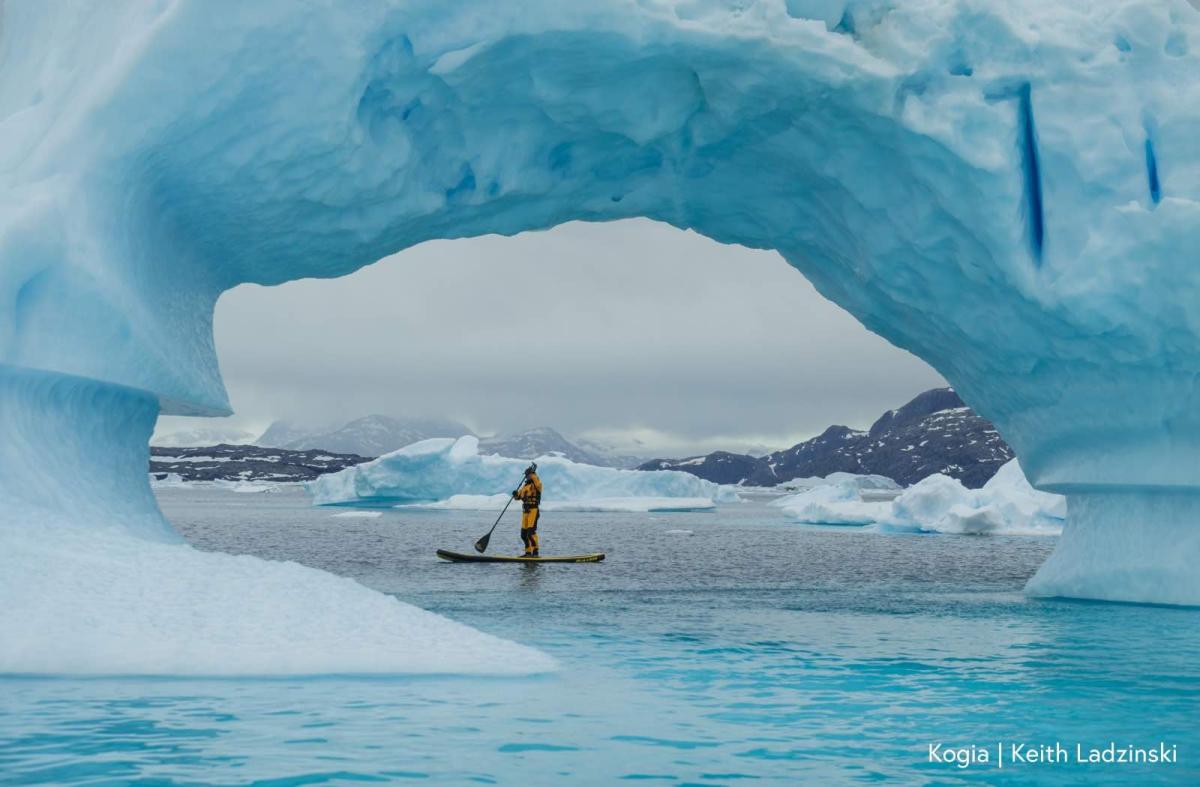
A paddle boarder on an expedition in Greenland.
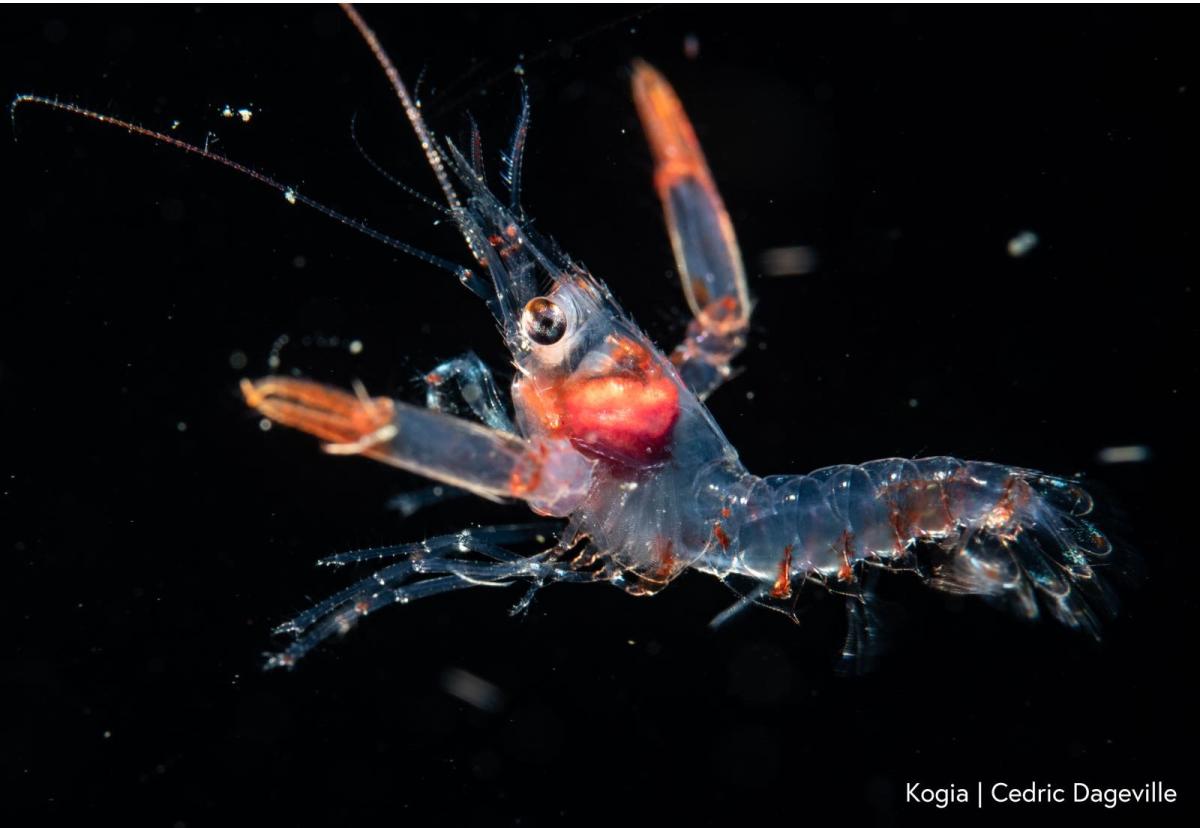
A shrimp in North Sulawesi, Indonesia.
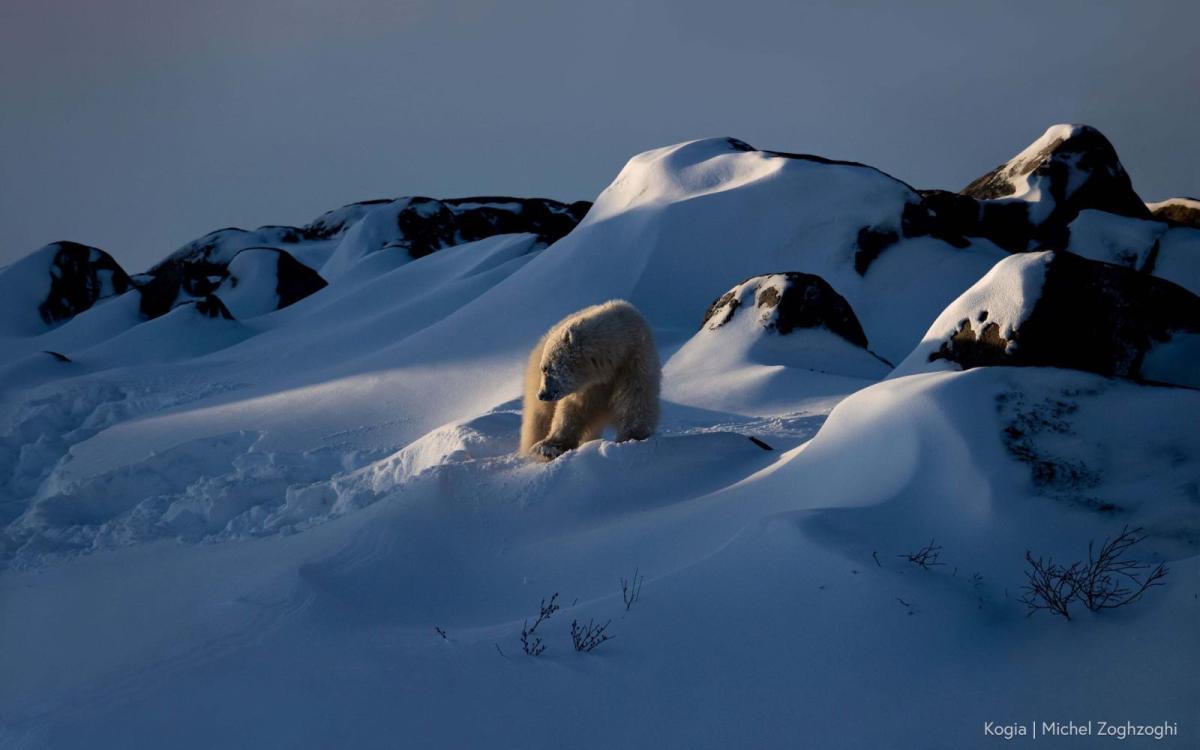
A polar bear near Churchill, Canada.
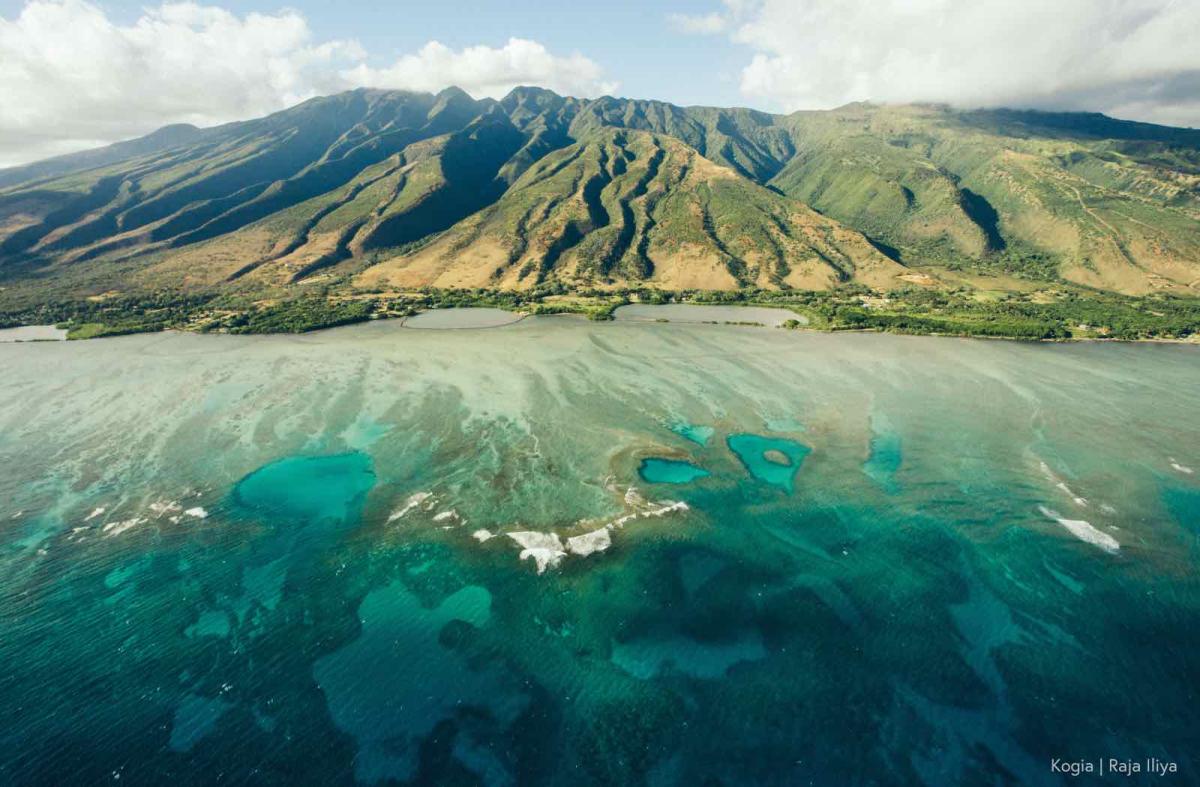
An aerial view of the coastline of Maui, Hawaiʻi.
While showing the vibrance and beauty of marine wildlife and ecosystems, visual storytelling can also introduce a harsh juxtaposition with the threats those ecosystems face. This photo, for instance, shows an overhead view of an oil refinery off the coast of Long Beach, California. At first glance it looks peaceful, almost pretty. But a closer look reveals its sheer scale, and its nearness to the shoreline — where residents face some of the worst pollution in the country.

This story was originally published by Grist with the headline Photos help tell climate stories. This media library lets conservation orgs access them for free. on May 29, 2024.
When Cortni Borgerson thinks about the trillion or so periodical cicadas emerging from underground, she sees more than clumsily flying insects flitting from tree to tree in search of a mate. She sees lunch.
Some may find that idea revolting, a belief often, if unknowingly, steeped in colonialism and the notion that eating insects is “uncivilized.” But Borgerson, an anthropologist at Montclair State University, is among those eager to change that perception. She’s a big fan of dining on bugs of all kinds, but finds cicadas particularly appetizing. “It’s one of the best American insects,” she says.
Their texture, she says, is something like peeled shrimp, and their taste akin to what you’d experience “if a chicken nugget and a sunflower seed had a baby.” She recommends first timers cook them like any other meat and try them in tacos.
Borgerson’s not alone in her fascination with edible insects. In the lead up to this spring’s dual-brood emergence, a flurry of cicada recipes, sweet treats and culinary odes have sung the bulky bugs’ praises. The interest is part of a growing social movement in favor of alternative proteins among consumers increasingly demanding a more sustainable food system.
“They’re this magical-looking insect that crawls up, that people are excited and interested in,” she says. “People are more excited about eating it than they might be about other types of insects.”
The buzz around this cicada emergence provides an opportunity to break down misguided stereotypes and misconceptions about eating insects, Borgerson says. If you ask her, the creatures are more than tasty. They’re a sustainable alternative to carbon-intensive proteins like beef and an effective way of addressing rising rates of food insecurity.
“Some insects have an incredible opportunity, and a potential, to reduce our carbon footprint in a delicious, but sustainable, way,” she says.
Roughly 30 percent of the world’s population considers insects a delicacy or dietary staple, a practice that goes back millennia. A study published earlier this year found that over 3,000 ethnic groups across 128 countries eat 2,205 species of Insecta, with everything from caterpillars to locusts appearing in dishes of every description. These invertebrates are a rich source of protein, fat and vitamins. The creatures are most commonly eaten by consumers in Asia, North America — predominantly Mexico, where people enjoy 450 varieties — and Africa.
The idea remains a novelty in the United States, where just six species are regularly consumed (crickets being the most popular). Consumer attitudes, based on old stigmas, remain a hurdle to broader acceptance.
Julie Lesnik, an anthropologist at Wayne State University who studies the Western bias toward eating things like beetles, calls the “ick” response many Americans have toward the idea a cultural byproduct of colonization.
“Disgust is felt very viscerally and biologically,” she says. “So to tell somebody their aversion to insects is cultural and not physiologically programmed is a difficult thing to wrap your head around, because you can feel your stomach turn, you can feel the gag reflex come up if you are disgusted by the idea of eating insects. But disgust is one of the few learned emotions. So we are disgusted by the things our culture tells us to be disgusted by.”

Such a reaction also can be a sign of internalized prejudice, she says. Indigenous peoples throughout North America once consumed a variety of insects, a practice European colonists deemed “uncivilized” — a way to “other” nonwhite communities and cultural practices. “Is it racist? Yes, simply put,” Lesnik says.
The racialized foundation of that ideology has garnered scrutiny in the wake of viral right wing claims that a shadowy global elite will make people eat insects. Politicized conspiracy theories — like the suggestion that Bill Gates will take away meat and force everyone to eat insects — are insidious misinformation that Joseph Yoon fights daily.
“The very notion of edible insects, I believe, has people think about the lowest denominator,” says Yoon, the founder of Brooklyn Bugs and chef advocate for the United Nations International Fund for Agricultural Development. “It’s for the apocalypse. It’s for poor people. It’s for marginalized communities in developing nations. And so the very notion of this creates a sense of fear, anger, resentment. Instead of putting insects in a silo because you don’t understand … we can work together to provide solutions for our global food systems.”
Eleven years ago, the U.N. Food and Agriculture Organization called bugs a promising alternative to conventional meat production. In the decade since, a surge of North American startups have launched to make insects into a primary food source for humans, an ingredient (flour is common), or as feedstock for cattle and pets. The market for such things in the United States is expected to hit $1.1 billion by 2033; globally, the figure is more than three times that.
Still, for an industry in its infancy, the viability of scaling insect protein into a legitimate climate solution remains a burning question, one Rachel Mazac has studied intently. Mazac, a sustainability researcher at the Stockholm Resilience Centre, is among the scientists that have attempted to quantify the carbon footprint of producing things like crickets, mealworms and black soldier flies on an industrial scale. So far, she’s found that insects make “extremely efficient” use of land and water compared to conventional livestock. Although she acknowledges the dearth of data on the subject, Mazac thinks insects warrant further consideration as a feasible alternative to more common — and carbon-intensive — meats.
Not everyone sees insects as a climate solution, however. Matthew Hayek, an environmental researcher and assistant professor at New York University, co-authored a 2024 survey of more than 200 climate and agricultural scientists that showed widespread support for greater efforts by governments and the private sector to incentivize alternatives to meat and dairy. But he doesn’t believe insects belong on the slate of urgent solutions. Among other things, he questions the environmental impact of feeding them to livestock, and whether the creatures can be raised and harvested humanely.
“It’s a worthwhile area of investigation for fundamental science and research and development,” he says. “It is not worthwhile as an actual climate solution at a market level for somebody to invest in a climate solution.”
Jeffery Tomberlin, an entomologist at Texas A&M University and director of the Center for Environmental Sustainability through Insect Farming, doesn’t buy that. He says every possible alternative protein needs to be on the table because meeting the climate crisis requires reforming the global food system. “We should be looking at all options when we talk about how to be better stewards of our planet,” he says. “We need to diversify as much as possible.”
Doing that, however, will require consumers and policymakers to put aside old ideas and consider new possibilities. That, Tomberlin says, would prompt the kind of research and funding needed to “safely and efficiently” develop the processing and production practices needed to make insect protein a viable, scalable alternative to other meats. Only then will the idea of eating insects be more than a flurry of trendy headlines, and cicada tacos more than a fleeting novelty.
This story was originally published by Grist with the headline Cicadas à la carte? Here’s why it’s so hard to get Americans to eat bugs. on May 29, 2024.
On Tuesday, the Biden administration unveiled new guidelines on “responsible participation” in the voluntary carbon market, or VCM — the system that allows companies to say they’ve canceled out their greenhouse gas emissions through the purchase of carbon credits. Theoretically, every carbon credit a company buys represents one metric ton of CO2 that has been reduced or avoided through projects that wouldn’t have happened without the funding — like tree-planting or the installation of wind turbines.
The guidelines, signed by President Joe Biden’s top climate and economic advisers, as well as the secretaries of Treasury, Energy, and Agriculture, are intended to boost the market’s credibility following a series of investigations that revealed numerous credits to be ineffective.
One guideline calls for credits to meet “credible atmospheric integrity standards,” and another says companies should complement offsetting with the reduction of their own carbon footprints. The guidelines also call for environmental justice safeguards to ensure that credit-generating activities — many of which are in the Global South — do not harm local communities.
For the most part, the 12-page document reflects existing guidance from informal overseers of the voluntary carbon market, including the Integrity Council for the Voluntary Carbon Market and the Voluntary Carbon Markets Integrity initiative. In this way, the guidance is a sort of endorsement of the work those nonprofit governance bodies have already been doing — and of carbon markets themselves.
The new guidelines are intended to help address a crisis of confidence in carbon credits, many of which have been found by recent studies and investigations to be ineffective. Some credits come from renewable energy projects that would have been built anyway, even without funding from the VCM. Others are generated by protecting natural ecosystems that were never under threat. Still others are based on projects that store carbon in ways that are unlikely to last more than a few years. Last year, the Commodity Futures Trading Commission — a federal regulator — created a new task force to address potentially widespread fraud and market manipulation within the VCM.
According to a 2022 analysis from the World Economic Forum, less than one-fourth of 137 global companies surveyed planned to use carbon credits to achieve their emissions reduction targets; 40 percent of them cited the risk of reputational damage.
Some environmental groups hailed the Biden Administration’s guidance as a way to add legitimacy to the voluntary carbon market. Amanda Leland, executive director of the nonprofit Environmental Defense Fund, said in a statement that the Biden administration’s “vote of confidence” could help the VCM reach $1 trillion by 2050, implying that this growth would funnel money into green jobs and climate resilience in the developing world.
The global VCM is currently valued at around $2 billion. It grew rapidly in 2021 before declining in 2022 and 2023.
Critics said the new rules fail to address more fundamental concerns about the effectiveness of carbon credits. Some VCM offset projects send only a small fraction of the funds they generate to the communities they’re supposed to benefit, while the rest of the money gets gobbled up by traders, registries, investors, and other middlemen. And for a number of reasons, scientists say it’s inaccurate to equate a ton of carbon stored in biological systems with a ton of carbon released from the burning of fossil fuels — yet this assumption undergirds the VCM.
Proponents of carbon markets are still trying to “fit the circle of climate science into the square of carbon accounting,” Steve Suppan, a policy analyst for the nonprofit Institute for Agriculture and Trade Policy, told Grist.
Peter Riggs, director of the nonprofit Pivot Point and a co-coordinator of the Climate Land Ambition and Rights Alliance, said the federal guidelines are more concerned with creating a smooth market environment than with the integrity of carbon credits.
“Generating rules for secondary markets and the clearing of credits may help with carbon market liquidity,” he told Grist. “But if the underlying accounting is still flawed, these moves just create systemic risk — in much the same way that credit default swaps did during the financial crisis.”
Instead of carbon markets, Riggs and others have advocated for a system of climate finance that allows countries, companies, and other polluters to support conservation and carbon-sequestering activities without claiming them as offsets.
This story was originally published by Grist with the headline Can carbon offsets actually work? The Biden administration thinks so. on May 29, 2024.
Author Kathy Freston joined Earth911 to talk about her new book with co-author Gene Stone,…
The post Best of Earth911 Podcast: Author Kathy Freston on 72 Reasons To Be Vegan appeared first on Earth911.